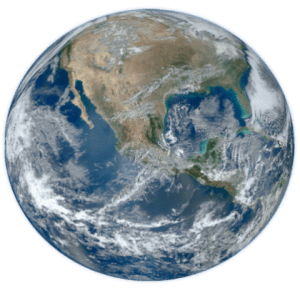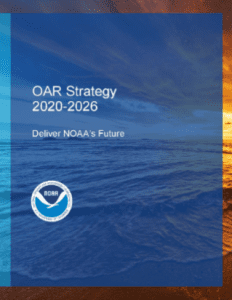About The Modeling, Analysis, Predictions and Projections Program Mission
The Modeling, Analysis, Predictions, and Projections (MAPP) program supports advances in the development and application of Earth system models and analyses across NOAA for the purpose of building resilience to climate impacts, predicting and projecting change from years to decades in the future, and improving our understanding of and ability to simulate the Earth system. MAPP works with partner agencies in the U.S. Global Change Research Program, and focuses on engaging the non-NOAA research community to help advance NOAA’s modeling capabilities.

In addition to supporting fundamental advances to modeling systems, MAPP supports work to address major areas of climate risk including coastal inundation, marine ecosystem changes, heat and health, infrastructure impacts, and water resources including drought and flooding. MAPP’s work directly impacts or provides the foundational capability for improving understanding of the climate system, assessing climate impacts for decision-making, and improving NOAA products used in climate mitigation and adaptation efforts.
MAPP’s Role in NOAA
NOAA’s Office of Oceanic and Atmospheric Research is home to NOAA’s Earth and climate modeling activities targeting timescales of years to decades in the future. MAPP works across OAR to accentuate the missions of OAR’s laboratories in their work to develop and apply these models to better understand the climate system and its evolution, and to project its changes. The work MAPP funds helps improve predictions and projections of marine fisheries in collaboration with NMFS; the understanding of changes impacting the coastlines, Marine Protected Areas,Sanctuaries overseen by NOS; the delivery of climate monitoring and projection products by NESDIS; and the technology that undergirds weather and seasonal forecasts at NWS. This work helps to support NOAA’s broader adaptation and resilience efforts and enhances NOAA’s internal model development and application activities through collaboration with scientists outside NOAA.
How MAPP fits OAR strategy
NOAA’s Office of Oceanic and Atmospheric Research has four Strategic goals, each of which MAPP supports:
- Explore the Marine Environment – MAPP supports research, development, and transition work engaging OAR labs, Fisheries science centers, Sanctuaries staff, and external scientists to develop modeling, climate monitoring products, predictions, projections, and improved understanding of how climate variability and change affects aquatic ecosystems and managed resources. This directly supports objective 1.2 (“determine how climate change impacts marine ecosystems, coastal communities, and the global ocean system”).
- Detect Changes in the Ocean and Atmosphere – MAPP supports objective 2.2 to “Improve understanding, forecasts, applied knowledge, and predictions in regions of significant change and for high-impact events.” through process-based model analysis and development, and analysis of model fidelity in depicting climate extremes. MAPP supports climate attribution efforts with the CVP and COM programs to understand the contribution of natural variability and forced change to extreme events.
- Make Forecasts Better – objective 3.1 (“Develop interdisciplinary Earth system models”) lies at the the core of MAPP’s effort’s to advance climate and Earth system models through process-based analysis and diagnostics, and Climate Process Teams to develop models in collaboration with observationalists and process modelers. MAPP also works to “Transition science that meets users’ current and future needs” (objective 3.3), particularly for fisheries and Sanctuaries management, and drought preparedness.
- Drive Innovative Science – MAPP “reinforce[s] a culture of innovation and adaptability” (objective 4.1) by funding a portfolio of research with a diverse risk profile to advance science toward use and also develop new and innovative ideas and capabilities. This meshes with objective 4.2, to “invest in high-risk, high-reward science”, and brings the broad research community to bear on OAR’s interest in “acceler[ating] the delivery of mission-ready, next-generation science” (objective 4.3).
Program Focus Areas
Primary objectives of the MAPP program include: 1) improving climate Earth System models; 2) using and improving methodologies for global to regional scale climate analysis, predictions, and projections; and 3) developing climate modeling capabilities and applications relevant to decision-makers based on climate analyses, predictions, and projections.


Starting in 2019, CPO began to coordinate CPO’s research investments around high-impact climate risks. Four initial Climate Risk Areas were chosen: 1) Marine Ecosystems, 2) Heat and Human Health, 3) Climate Inundation, and 4) Water Resources. MAPP supports R&D that directly advances each of these risk areas.
Current major MAPP program areas:
- Climate-Marine Ecosystems: development of models and prediction systems, and information to understand climate-biogeochemistry-marine ecosystem interactions and yield improved modeling and prediction systems (Marine Ecosystems Task Force and National Marine Sanctuaries initiatives).
- Drought: funding of drought relevant research including engagement with NIDIS to implement a research effort drawing the broad research community into NIDIS activities and advancing NIDIS-relevant capabilities (Drought Task Force)
- Climate projections: leveraging CMIP5/6 to 1) produce climate projections, 2) evaluate climate models, 3) understand combined climate effects, 4) provide input to NCA5 (CMIP6 Task Force)
- Model diagnostics: support community-GFDL-NCAR collaborative activity to develop process-level diagnostics that undergird model development process (Model Diagnostics Task Force)
- Climate sensitivity: understand climate sensitivity in the CMIP6 era of models and translate understanding into model development and improvement activities (Climate Sensitivity Task Force)
- Focused model development: Climate Process Teams and other model development projects to advance NOAA’s climate and Earth system modeling suite.



